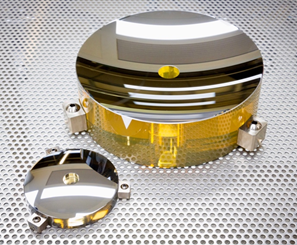X-tools, a thin-film physics toolbox for XUV optics
Title: X-tools, a thin-film physics toolbox for XUV optics
Project Type: Industrial Partnership Programme
Project Leader: Prof. Dr. F. Bijkerk (f.bijkerk@utwente.nl)
Duration: 2019-2024
Cost estimate: M. 4.2 Euro
Funding: NWO, ASML, Carl Zeiss SMT, Malvern Panalytical, MESA+
Industrial partners: Zeiss SMT, ASML, Malvern Panalytical
Encouraged by new technological possibilities of XUV optics, basically multilayered Bragg structures, many industrial and academic parties are eager to exploit further options to manipulate short-wavelength light. These range from multilayered optics engineered with atomic precision to show near-theoretical Extreme UV reflectivity, to highly transparent, few tens of nanometer thin membranes which are robust enough to withstand half a kilowatt of EUV power. This broadened interest from the various new applications triggers a multitude of new physics research questions.
NWO has granted a proposal of the University of Twente to address these research questions. In an industrial consortium, the XUV Optics group at MESA+ at Twente has been funded to carry out a multitude of thin film optics research projects through the NWO Industrial Partnership Programme.
The key research theme of this programme is to develop the missing physics understanding for the new thin film optics. The insights then can act as physics instruments, or 'tools', to enable the realization of the new optics: a thin-film physics '˜toolbox' is made available. It will become possible to manipulate the processes of atomically thin, complex layered materials systems which satisfy optics laws in the XUV range: complex optical indices need to be fine-tuned by altering electronic structures, layer roughness levels need to be further mitigated to the sub-tenth nanometer level, thin film materials stresses need to be controlled, and thermally and chemically induced diffusion processes need to be fundamentally limited. All these processes require new types of diagnostics with sub-tenth nanometer layer thickness resolution and sensitivity to the atomic-level, chemical state. These physics tools in this IPP toolbox then serve to design, build, and diagnose the various XUV optical components.

